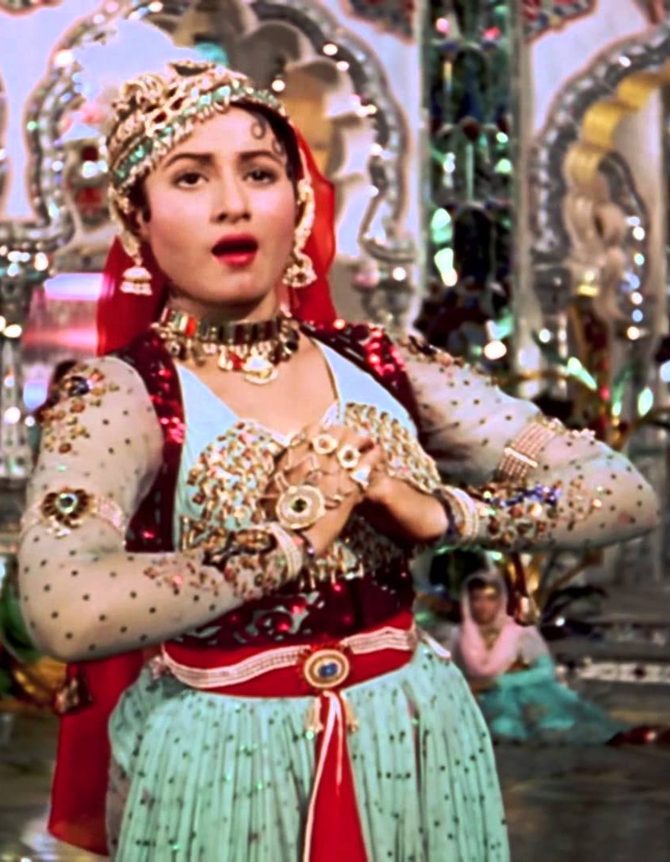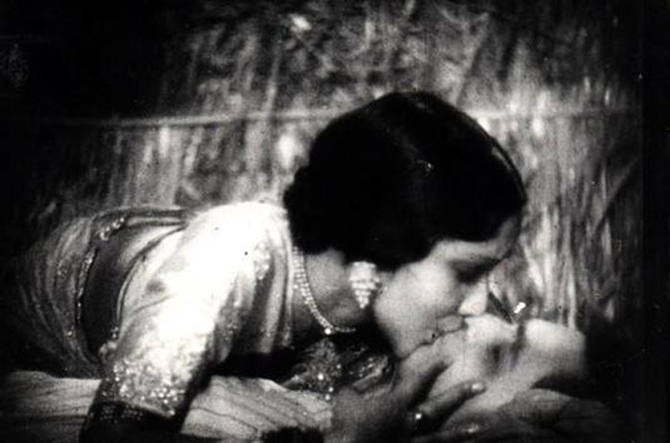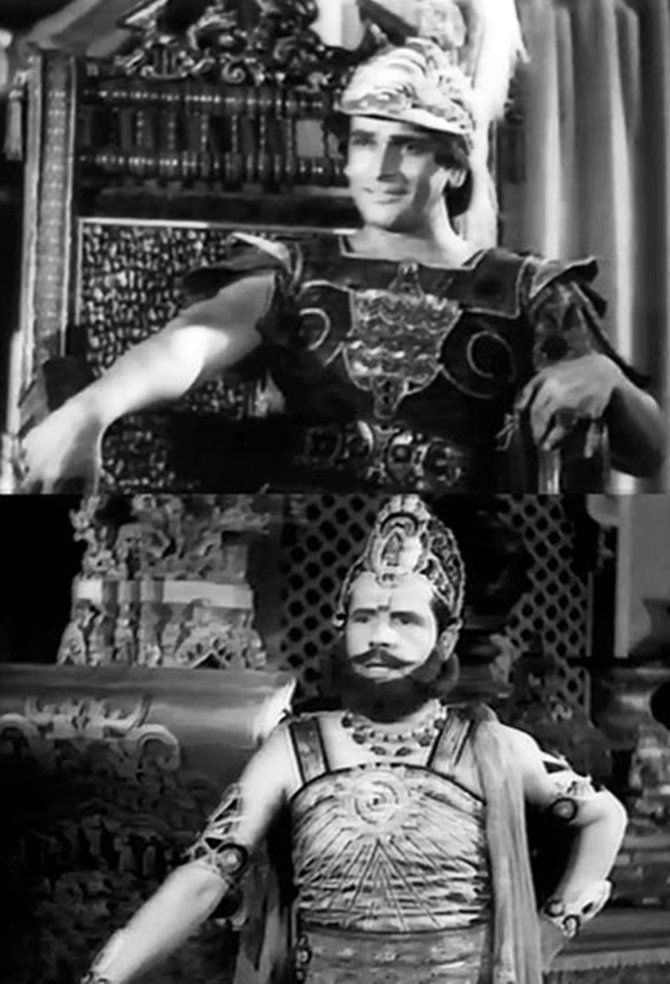Ranjita Ganesan
For a nation seemingly consumed by a passion for making and viewing cinema, India's track record in preserving the medium's history so far has been far from laudatory.
The National Museum of Indian Cinema, scheduled to open on November 15, will be only the first such exhibit in the country; ironic, considering India happens to be the world's biggest producer of films, with more than a thousand releases annually.
"We hardly document anything. Certain artefacts have already vanished forever," says noted film critic Ashok Rane.
Although films were being made as early as 1911, the government started archiving them only 1964 onwards - 17 years after independence.
Only two reels of Dadasaheb Phalke's Raja Harishchandra are available with the National Film Archive of India.
Some historians believe these belong to Phalke's 1917 remake of the same title and not the original from 1913.
Of the roughly 17,000 Indian films made in the silent era, prints of only about 12 have been salvaged.
Costumes from several landmark films and elaborate sets, including the Sheesh Mahal created for the magnum opus Mughal-e-Azam, have not survived.
Please click NEXT for more...
Coming Soon: The real Filmistan on Pedder Road
Image: A still from the original Raja HarishchandraThe museum -- which will commemorate the centenary year of Indian cinema -- is being developed by the Film Division (the Ministry of Information and Broadcasting's film producing arm) in collaboration with National Council of Science Museums, with the National Buildings Construction Corporation handling construction work at the museum site.
To help it sail through uncharted waters, the team toured international museums like the Cinema Museum in London, National Media Museum in West Yorkshire and Museum of Moving Image in New York for research, says NCSM's senior curator Indranil Sanyal.
They also sought the counsel of veterans such as Shyam Benegal, Adoor Gopalakrishnan and Sai Paranjpye.
Coming Soon: The real Filmistan on Pedder Road
Image: Fearless Nadia in 11 ' ClockConsultant curator at the museum and film historian Amrit Gangar is visibly excited about the project.
Laid neatly on his desk in the Film Division office are vintage posters and song books collected on a recent trip to Gujarat. Gangar has also been connecting with collectors to procure film scripts and lobby cards.
The more threadbare items will be restored at the NCSM's conservation centre.
Some collectors are unwilling to part with memorabilia like costumes because of sentimental value, says VS Kundu, director general of the Film Division.
"We are trying to convince them to at least loan these to us."
Coming Soon: The real Filmistan on Pedder Road
Image: Gita Bali in Shola jo bhadke, AlbelaIn addition, the museum will display cinematic equipment, both originals and replicas, which will give visitors a sense of how filmmaking evolved from the time of the heavy, hand-cranked film camera to the feather-light digital ones in use today.
It also aims to bust myths and educate visitors on rarer aspects of history, explains Gangar, sharing one example, "There was a feature film before Raja Harishchandra called Pundalik in 1912. But that was not considered Indian because the cameraman was British."
A pre-Phalke cinema segment will also be among the displays, talking about the magic lantern and precursors that had acquainted the audience with moving images before the cinematograph.
Other displays will include information about the onset of sound, playback singing and regional cinema in India.
Arrangements are being made to have regular film screenings and an interactive set-up, so that visitors can pick and listen to their favourite old songs.
Coming Soon: The real Filmistan on Pedder Road
Image: Devika Rani and Himanshu Rai in KarmaThe museum will be housed within the Film Division complex on Pedder Road in Gulshan Mahal, a high Victorian gothic structure in pink and white, which once stood facing the Arabian Sea.
Flanked by skyscrapers over the years, the 19th century bungalow had been largely unused except for a brief appearance in Munnabhai MBBS.
Its soaring rooms with pretty patterned tiles and imposing brown doors make an ideal setting to pay tribute to the larger-than-life medium of cinema.
The venue is further vindicated by the building's historic links with documentary filmmaking.
In 1932, bungalow owner Cassamally Jairazbhoy went on the Hajj accompanied by his wife and mother-in-law.
Jairazbhoy's wife had filmed the pilgrimage and it was probably one of the earliest documentary films made by an Indian woman, according to Gangar's findings.
Coming Soon: The real Filmistan on Pedder Road
Image: Sohrab Modi and Prithviraj Kapoor in SikanderCement mixers and construction workers have lately been levelling the approach road and building parking areas.
Inside the structure, stacks of LED television sets are being unpacked and mounted for interactive displays in the bungalow's eight chambers.
Explanatory banners with large black-and-white photographs have been glued to the walls and the cinematic equipment arranged by era.
Coming Soon: The real Filmistan on Pedder Road
Image: Sandhya in Do Aankhen Barah HaathWork was, however, marked by delays.
While the Ministry of Information and Broadcasting in 2010 announced its decision to open the museum in cinema's 100th year in the country, films in the country were about 85-years old when the idea was initially discussed.
Since 2010, the plan had also run into opposition from local residents who raised concerns about parking and potential noise pollution.
A 10-storey annexe will be developed in about two years to hold state-of-the-art, theme-based galleries. A small studio is being converted into a multipurpose facility to be used as a screening area.
So far, most objects have been donated but active purchases will begin later, notes Viplove Bhatia, director, Film Division.
People like Rane are relieved that active steps towards documentation are being taken. "We always wanted something like this. Whatever history has been recorded since the 60s needs to be showcased," says Rane. "Der aaye, durust aaye (Better late than never)."









Comment
article